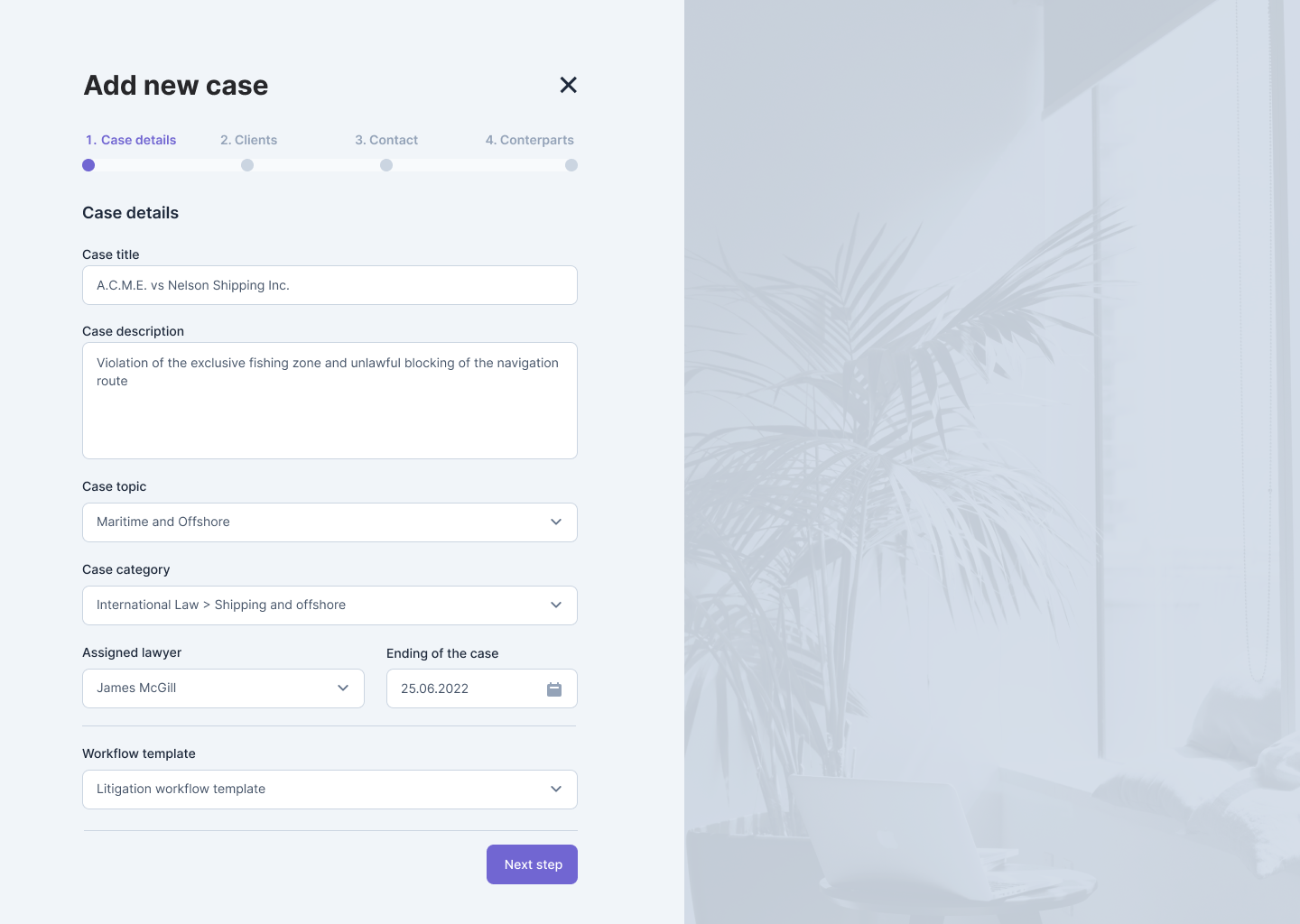Analytics and automation can significantly support legal work processes to make them better and more effective. This requires case data to be structured and well classified to enable computer algorithms to identify similar cases, suggest templates, and preprocess documents and case planning, thereby removing unnecessary repetitive work and efforts. This frees up time for real legal analytical work where human brain power and experience is central. As a result, the lawyer's day becomes more interesting and pleasant, which is good for the business and the bill to the client - it's a win-win situation.
Four dimensions
Legal Plant has three main mechanisms for case classification:
- industry domain or vertical,
- general topic,
- category of case
The fourth dimension, which is applicable law, will be implemented shortly.

Based on these dimensions, the Legal Plant engine can get a pretty good understanding of the anatomy of a case and power up a whole lot of smartness! Legal Plant is a process-oriented system where the user and the system in an interactive workflow enrich the case information for each new data entry in a structured way. As much as possible, the system suggests relevant data and choices, and the user accepts and approves to make it an effortless and intuitive process that seems friction-free and seamless to the users.
How it works
When it comes to general topic and case categories, we assign these parameters to each case when creating it. The «add new case» wizard is designed in such a way that the categorization of issues is as easy as possible. Thanks to the fact that the user assigns the general topic and case category in the first step, we can be sure that no new case will be added to the database without these parameters.
The existing pool of topics and categories is an effect of the practical, everyday work of experienced lawyers, resulting from their knowledge and experience.
When we talk about the first dimension, i.e. industry domain or vertical, there is no need to reinvent the wheel. This data is in the company registry brreg.no, which is integrated with Legal Plant. When, in the second step of the adding case wizard, we select a client using the search engine in the Brønnøysundregistrene directory, the information regarding the industry domain of a given company is attached automatically.
The last dimension of the data structure that is yet to be implemented is the applicable law. We plan to implement this functionality in the coming months.

Easy to do means well done
Structuring the data collected in Legal Plant is easy to carry out, seamless, and intuitive. It is an easy process that guarantees that all data will be entered correctly - the appropriate user experience of the process ensures that the user will be willing and able to carry it out well. Furthermore, data structured in this way is susceptible to processing with artificial intelligence, which can significantly reduce the hassle associated with the mechanical performance of repetitive activities and help reduce the effort and costs related to legal work.